Winnebago — Aaron LaPointe sits behind a desk in the Little Priest Tribal College’s library basement, ready to speak to a class in a new program he helped develop – diversified agriculture.
He’s here, on this 100-degree August day, to show these high school and college students – the future of the Winnebago Tribe, he believes – how Ho-Chunk Farms, the tribe’s farming company, is changing the face of agriculture on their reservation.
“When you asked a student at my high school what a farmer looks like they would tell you a white guy with cowboy boots and a cowboy hat on,” said LaPointe, senior director of business operations for Ho-Chunk, Inc. “They didn’t see themselves as farmers, they just thought that’s what the white guys do. And we just let them use our land to do that.”
That perception is rooted in a century of reality. The tribe only owns roughly 27,000 acres of its 120,000-acre reservation, after U.S. government actions that directly or indirectly led its farmland to pass into non-Native hands — mostly white farmers.
But that reality is starting to change. In the past five years, three Nebraska tribes – the Winnebago, the Iowa Tribe of Kansas and Nebraska and the Ponca Tribe of Nebraska – have bought an estimated 3,000 acres, total, of farmland that was once theirs.
Despite the tribes’ recent financial successes — or perhaps, in part, because of them — the process has been neither cheap nor easy. Tribal leaders say white landowners who know that buying back land is a priority believe the tribes can and will pay any price.
All three tribes are paying prices that are higher than normal, according to a Flatwater Free Press analysis of five years of land sales data, between 2018 and 2022, originally gathered by a University of Nebraska-Lincoln College of Journalism and Mass Communications data journalism class.
The Winnebago Tribe spent nearly $10,000 per acre, on average, to buy back 340 acres of ag land. That’s about $3,000 higher than the northeast region’s 2022 average.
Ho-Chunk leaders like LaPointe think the higher prices and headaches are worth it.
“We want to start farming our own reservation. We want to own our reservation again,” LaPointe said.
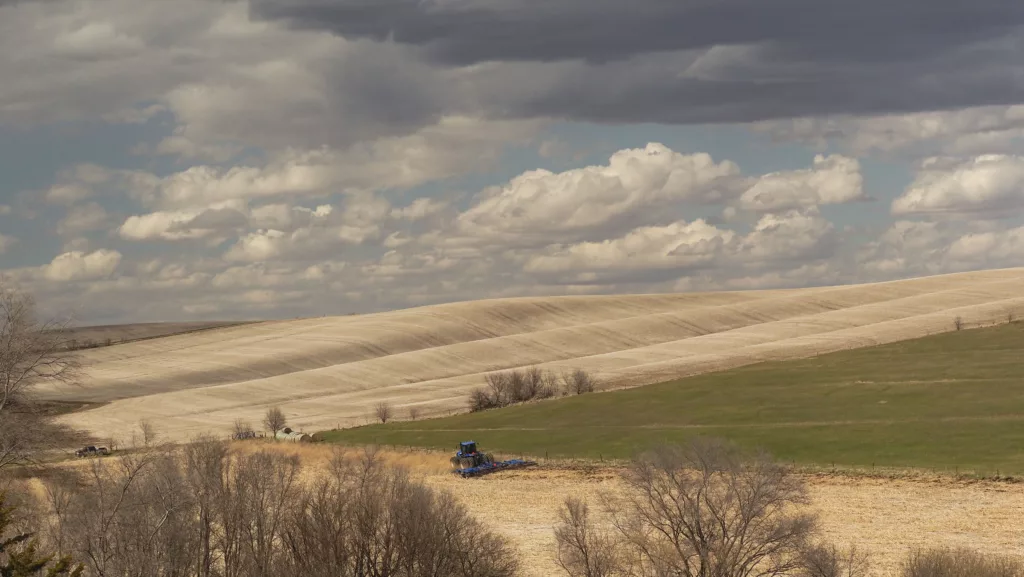
Reservation, not reserved
Just after the Civil War, the United States government attempted to completely upend the way most Native American tribes lived – including the way they viewed land.
The General Allotment Act of 1887, commonly known as the Dawes Act, tried to force assimilation by splitting the previously communally owned reservation into 160-acre pieces of farmland, individually owned by tribal members.
The government then sold the leftover land to non-Native settlers.
“At one point we owned 100% of our reservation, until the federal government thought ‘Oh, this guy’s got maybe too much land, let’s take some of that from them,’” LaPointe said.
Native Americans had no concept of land as property, said Ted Hibbeler, member of the Rosebud Sioux Tribe and Tribal Extension Educator at UNL. Tribes identified with territories through their creation stories, and built relationships with that land over thousands of years, but they did not view land as a form of money or power.
More reservation land was lost when tribal members grew financially desperate.
One example: After the land allotment, members of the Iowa Tribe of Kansas and Nebraska shopped for necessities in White Cloud, Kansas. When they couldn’t afford groceries at one store, the grocer convinced them to sign over land as a promise to repay.
“They needed food, and that’s just what they had to do,” said Tony Fee, secretary of the Iowa Tribe. “This individual got them to sign it over as collateral … and they never could afford to get it back. So they lost it.”
Today, the Iowa Tribe of Kansas and Nebraska owns about half of its 12,000-acre reservation, with Native and non-Native land ownership checkerboarded throughout.
On the Winnebago reservation, many families lost their land back paying unfamiliar taxes, or sold the land to cover medical bills, LaPointe said.
In Trust
Today, even tribal members who own their own farmland can’t use it as collateral to finance equipment or other purchases. It also can’t be easily bought or sold. That’s because for almost a century the land has been held in trust, another consequence of American history.
As more tribal members were forced to sell their land to pay bills, the 1934 Indian Reorganization Act put all remaining Native-owned allotments in trust indefinitely. It limited the jurisdiction of each tribe to only the land held in trust – not the original reservation boundaries.
By that point, though, an estimated 90 million acres had been removed from Native ownership, according to the Indian Land Tenure Foundation.

Leadership of the Winnebago Tribe today mostly want reservation land to stay in trust, LaPointe said, where it is under full tribal control and not taxed.
But it’s difficult to start farming if you own land in trust, LaPointe said, because that land can’t be used to get an operating loan at the bank. Farm equipment is costly, he said – a used combine can cost Ho-Chunk Farms around $400,000.
“It really puts tribes in a tough situation,” LaPointe said. “You can look at how much tribal trust land is farmed or row cropped by tribes, it’s very small. … A lot of it, it’s just cash leased out, because that’s the only real value it has.”
Ho-Chunk Farms created a compromise, using cash backing from Ho-Chunk Inc.’s other businesses as capital to rent out tribal land currently in trust.
“We’re owned by the tribe, so if we’re making money, they’re making money too,” LaPointe said.
Ho-Chunk Farms is now farming 6,500 acres, almost all of the available tribal owned land and allotment land.
“We’ve gotten to the point where our only expansion is based on land acquisition, and it’s tough,” LaPointe said, “With the land markets right now, I mean, they’re crazy high … so it’s really hard to buy ground right now.”
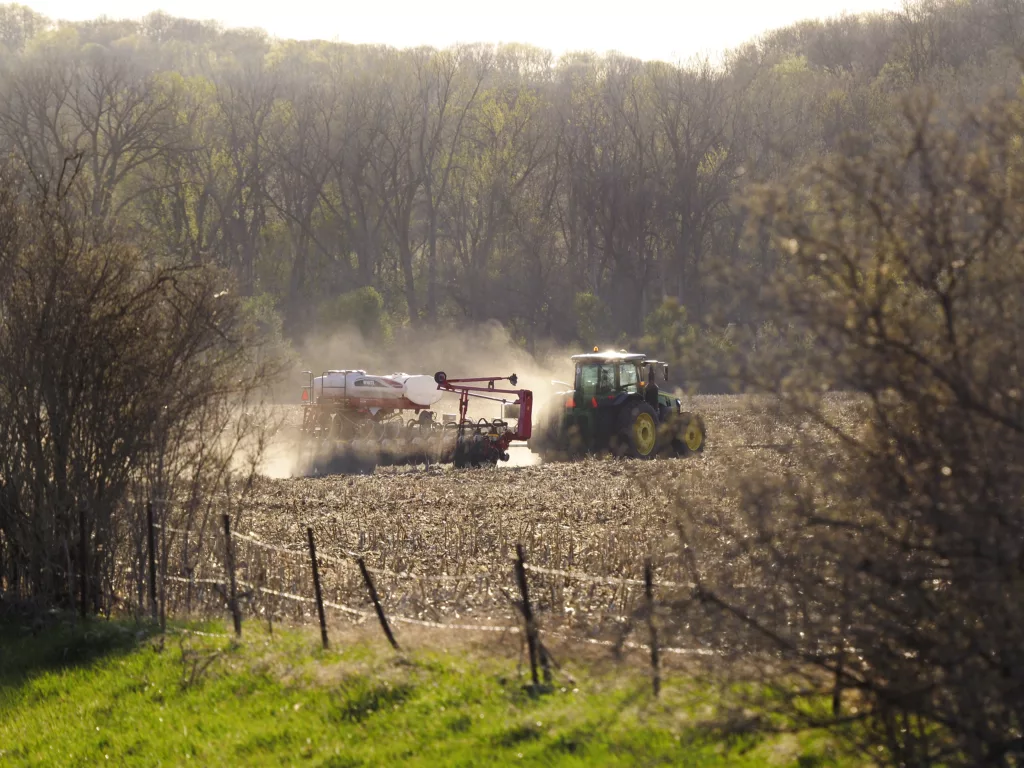
Sticker shock
In the past few years, both the Iowa Tribe of Kansas and Nebraska and the Ponca Tribe of Nebraska have made small and large land purchases. The Iowa Tribe added 4 acres next to some land it already owned. The Ponca made a 36-acre land buy.
Neither is notable, except for the price tag: More than $43,000 per acre.
“I don’t see too many places where anything approaching that happens,” said Cris Stainbrook, Oglala Lakota and president of the Indian Land Tenure Foundation. “I mean, $40,000 an acre is a lot.”
Farmland prices in Nebraska have risen across the board in recent years alongside the commodity market. According to UNL’s 2022 Nebraska Farm Real Estate Report, the highest quality irrigated land in the state is sold for around $11,000 an acre.
In north and southeast Nebraska, though, where the Winnebago and Iowa are buying, average acre values range closer to $7,000.
Those tribes often pay far more than that. In fact, every piece of reservation land the Iowa Tribe buys is priced higher than what similar land sells for, Fee said.
“The commodity prices, even though they’re up, don’t justify much more than $10,000 an acre on really prime farmland,” Stainbrook said.
Racism is an underlying reason for higher land prices, Stainbrook said. He has seen sales where the asking price dropped dramatically when a non-Native organization was the buyer. Other sales happened when the original seller asked a Native tribe for a sky-high price, passed away, and then relatives sold it at a more reasonable rate.
“When we’re helping (tribes) get land back there’s this underlying thought that if the tribe wants it bad enough, they’ll pay anything for it, or they must have a casino somewhere and therefore they can afford to pay more,” Stainbrook said.
Sales on tribal land are sometimes disincentivized by existing tax policies, like capital gains, LaPointe said, because the original sales happened for such little money that the taxes would be disproportionately high.

Sellers may face higher capital gains or estate taxes if they inherited the land from the original homesteader, Stainbrook said, but tribes shouldn’t be paying more because the current owner has to pay taxes on the sale.
“Do you think they sell it to another non-Indian and tell them, ‘Well, you’ll have to pay X amount more because of our capital gains’?” Stainbrook said.
Another reason for the high prices is the high demand.
One of the last pieces of reservation land the Iowa Tribe of Kansas and Nebraska bought was offered to another individual right before the sale, Fee said, so the tribe’s only option was to give more money to get the land.
“They got us over the barrel if we want it. I mean, then they know we want it. We want it bad enough. We’re gonna pay for it,” Fee said, “To me, that’s not the right way, but we really don’t have a choice.”
The Iowa Tribe didn’t have many opportunities to buy land four or five years ago, when values were cheaper, but now that prices have risen everywhere, sellers are offering up their land if the price is right.
“The tribe does feel that we should do everything we can to try to get the land back,” Fee said. “And we’re just doing what we can to work toward that.”
Speaking out: Rural communities of color changing the narrative
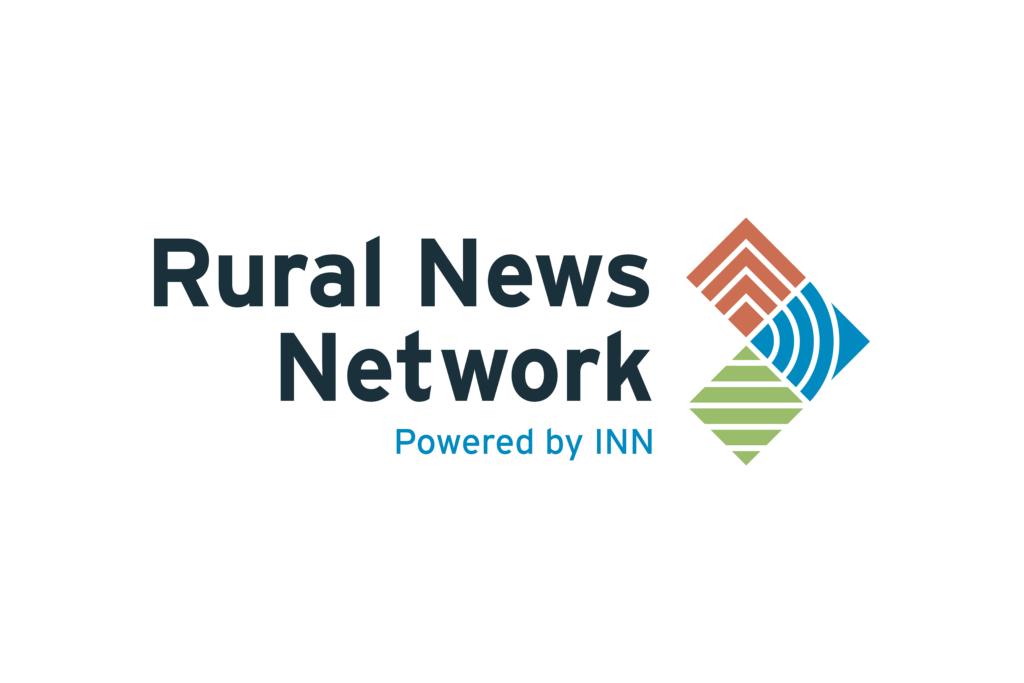
The nearly 14 million people of color who live in rural America face unique challenges that run the gamut — from navigating racism in real estate, environmental regulation and the justice system to gaining access to healthcare and broadband. This six-part series from the Rural News Network, made possible with support from the Walton Family Foundation, explores the issues these communities are facing and what some are doing to change their fates.
Food as sovereignty
For Trey Blackhawk, manager of the nonprofit Winnebago Tribal Farm, acquiring more farmland is a path toward food sovereignty, a way for the tribe to feed itself without relying on outside sources.
On a plot of around 40 acres, the farm, founded in 2018, grows fruit and vegetables, as well as traditional Indian corn that is used by tribal members in ceremonies.
“Hopefully in the future, the 5 to 10 year plan is to move towards a food co-op for the tribe,” Blackhawk said. “I think that would be really good and actually utilize all the local farmers.”
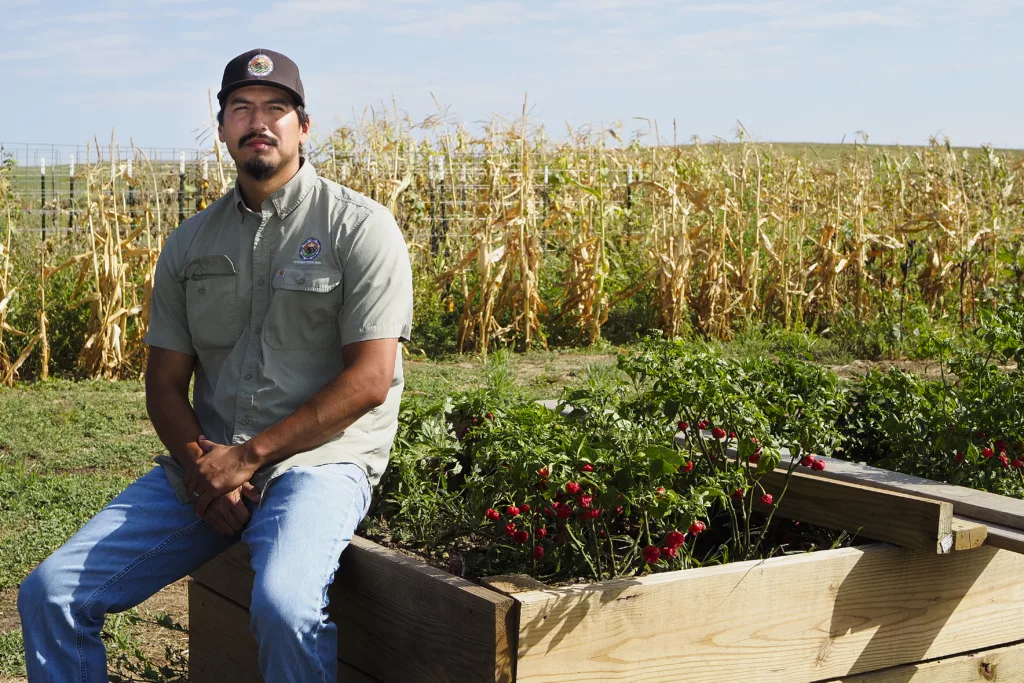
The nearest grocery stores to the Winnebago reservation are in Sioux City, Iowa. Tribe members drive 20 to 30 miles each way to get their groceries.
Blackhawk is hoping to both lessen the commute and lead tribe members to a new way of thinking about their food, where sustainably and locally grown is a possibility and a priority.
“I think the pandemic helped people realize that we’re not very sovereign. We can’t even feed ourselves, really,” LaPointe said. “All these shortages were happening and we’re like, geez, we’re really dependent on a lot of people for our food sources.”
During the COVID-19 pandemic, 49% of Native Americans and Alaskan Natives experienced food insecurity, according to a survey conducted by the Native American Agriculture Fund.
“That number is very high, it’s significant,” said Whitney Sawney, a citizen of the Cherokee Nation and director of communications and policy for NAAF.
Investments in Native agricultural infrastructure and operations help tribes to keep food production local so tribes can support their communities, Sawney said.
The Iowa Tribe of Kansas and Nebraska farms about 4,500 acres of their land, Fee said, with the goal of food sovereignty.
The tribe is moving toward regenerative agriculture, using native plant species, natural fertilizers and beekeeping to grow nutrient dense foods.
On the Winnebago reservation, LaPointe often visits classes at Little Priest Tribal College, presenting farming as a way to feed the tribe. It’s also a good career opportunity for the students’ future.
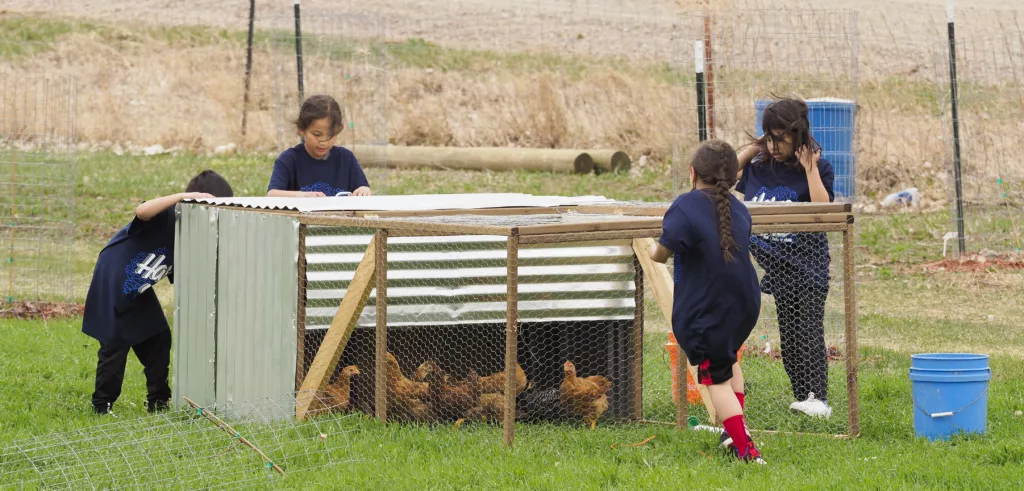
At 32, LaPointe is the second oldest Ho-Chunk Farms employee. Young tribe members are becoming interested in agriculture, and LaPointe believes they can be the next generation of farmers.
“That’s why I say land acquisition is so important for us, because our growth is dependent on it,” LaPointe said. “If I’m going to create jobs for this next generation of people that are getting educated in this field, we need to be moving forward by growing our acre base.”
This reporting is part of a collaboration with the Institute for Nonprofit News‘ Rural News Network, and the Energy News Network, Flatwater Free Press, Mississippi Free Press, New Mexico In Depth, Religion News Service and Sierra Nevada Ally. Support from the Walton Family Foundation made the project possible.
The series, “Who’s Buying Nebraska” was made possible by a grant from the Center for Rural Strategies and Grist.

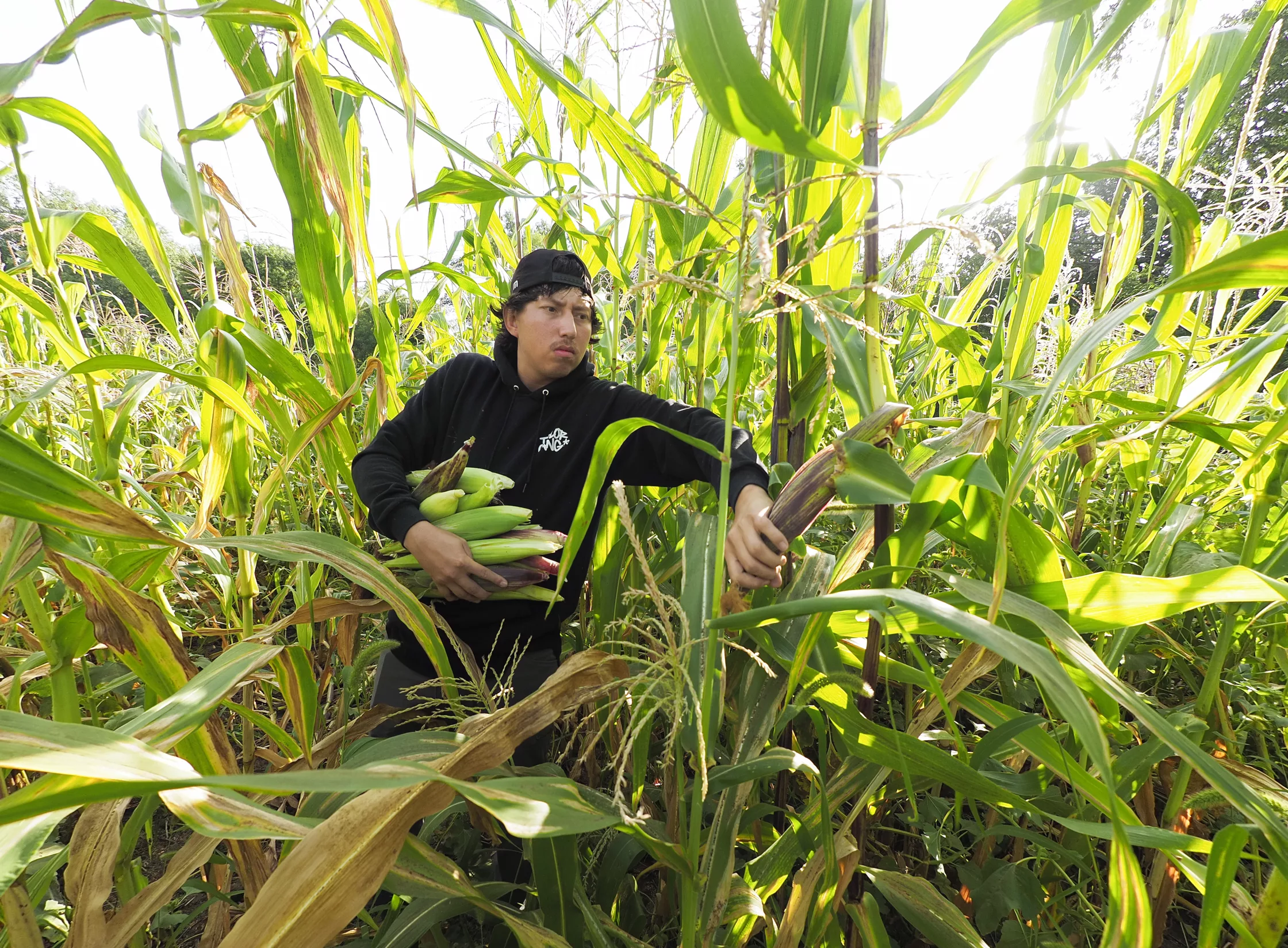

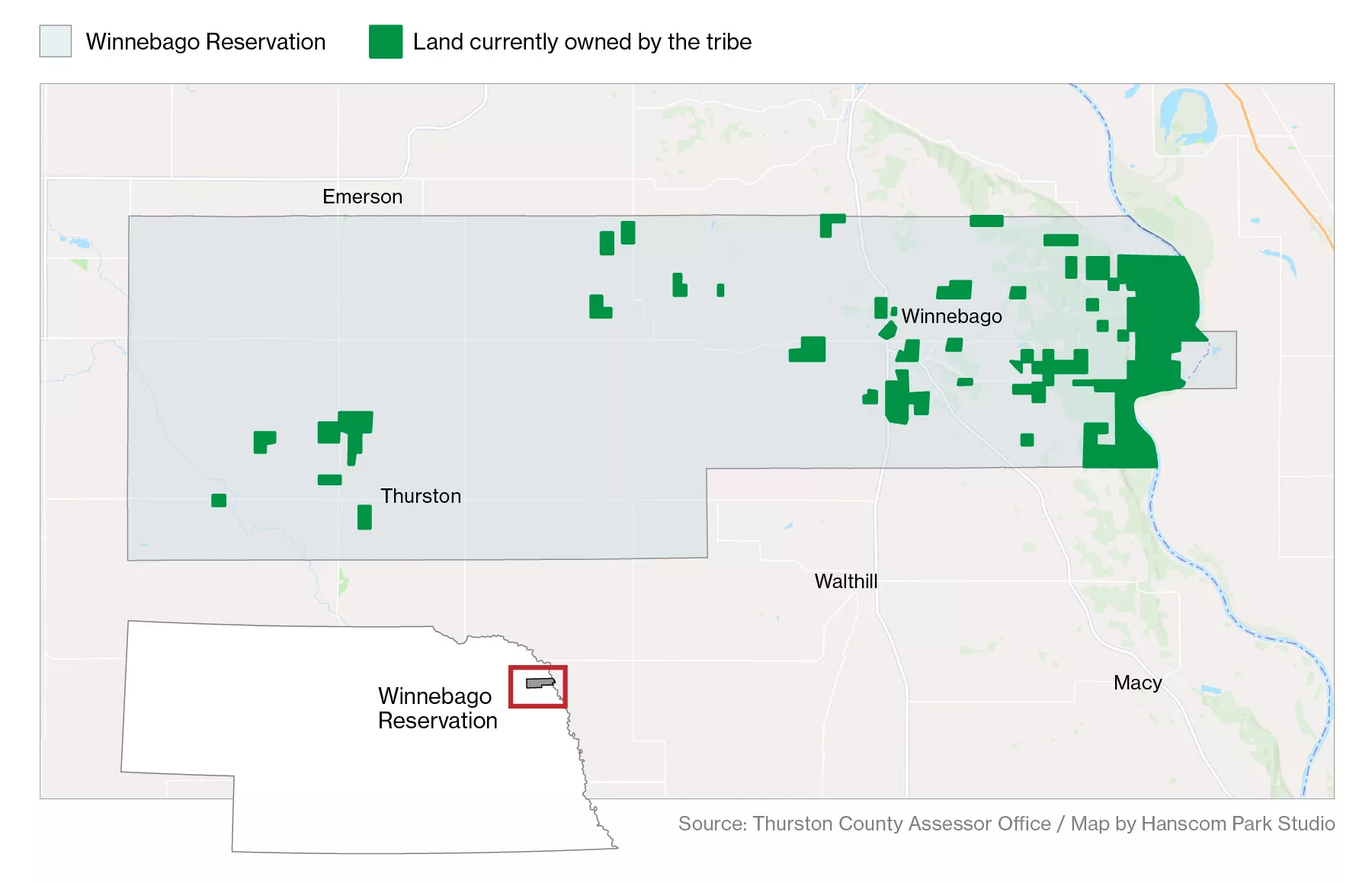

8 Comments
Three Native tribes are rebuying back land that was once theirs
That’s fiction.
For example, Winnebagos were historically from Wisconsin and Minnesota, not Nebraska. So, it’s inaccurate to claim that Nebraska & western IA land ever “belonged” to the Winnebago….to be “bought back”.
And before we blame whitey for the Winnebago being pushed west, let’s not forget that the Winnebago were initially forced out of the Great Lakes region by those nasty Ojibwe & Lakota.
Come on FFP.
Come on FFP! Let’s be accurate.
It’s a Free market for land if someone wants it, then they will pay the price asked. I don’t think that’s racist.
Excellent article.
I love their way of thinking about farming their own food to help the other Native Americans in their reservations. I wish they would do that in New Mexico where we have several different Native American tribes. It would help our future generations to come behind us be stronger and help get the land back that was taken from us. Great minds, great future’s. My generation of family Apache has 49% Native American blood.
I’m by no means a expert on farmland prices but if the tribes are purchasing land for more than land around this same area just because the tribes want to purchase it would seem like a lawsuit to me. Using a non Indian to work with the indians to purchase the land cheaper then buying it from that person cheaper. The way our government more or less taken native land away just because they had to much land I would think getting it back anyway cheaper is legal and right!
Wonderful story, and so frustrating and unethical that the tribes are paying so much more than standard for their land. What can we do to support them?
Super well researched and written article. I learned a lot.
The Winnebago People were without a doubt relocated, often forcibly removed, more than any other tribe in the history of this land. We have been documented as highly classified and unfairly denied our history more by the United States Department of War than the more socially and politically acceptable Tribal Nations.
When the Americans/”Patriots” won the Revolution against British rule, their victory established the American Continental Army’s dominance. These wars were often led by and won by the most dominant hidden and “invisible” Indigenous Chiefs, “scouts”, trackers, commanders, natural war leaders, athletes and hunters of Indigenous First Nations a.k.a American Indians.
Our/my Ho-Chunk/ Winnebago lineage has been heavily influenced, highly scrutinized as well as improperly federally documented more than most, since the inception of this land now recognized as The United States of America 1776. We, Winnebago & Ho-Chunk, were much more closely documented for reasons yet to be revealed and still unreleased to the public under the US Department of War. We were not even called Winnebago until they wanted to remove us from Red Banks (current day Green Bay Wisconsin area). Winnebago people are proving to be stemming from a huge lineage of Great Lakes Nations prior to colonization and an invisible border connected to so called Canada prior to the forced removals of the 1800s. Our Great Lakes Nations remain heavily influenced by federal regulations and laws designed to inflict cultural genocide from before the Revolutionary War/Department of War through the name change in 1849 to the Department of the Interior well into current times.
Ask our federal and congressional representatives for written proof of how much we, The Winnebago Sovereign Nation©️®️™️, Ho-Chunk Nation and Winnebago Tribe of Nebraska continues to sacrifice and donate to each state we reside in, the federalists parties in DC, the entire American Indian Law Consortium, each individual county government our Tribal People reside in,.build casinos in, travel through or formerly owned.
Most all new money in North America is rich from Indigenous First Nations Resources and established residency no matter how invisible our carbon footprint was/is. Old money became old money because of my land and my direct bloodline’s physical contributions to this World’s economic fortune. Thanks mainly to documentation by other countries and the commonwealths’ archives.
We, the people, have always and will always continue to monetarily and militarily sustain this land. Our best and most truly humble souls will remain invisible to you. All our best have died in vain. Yet, we continue sacrificing our best in futile attempts to make unhappy, greedy, souless, selfish people; happy. 🩶🧡🖤